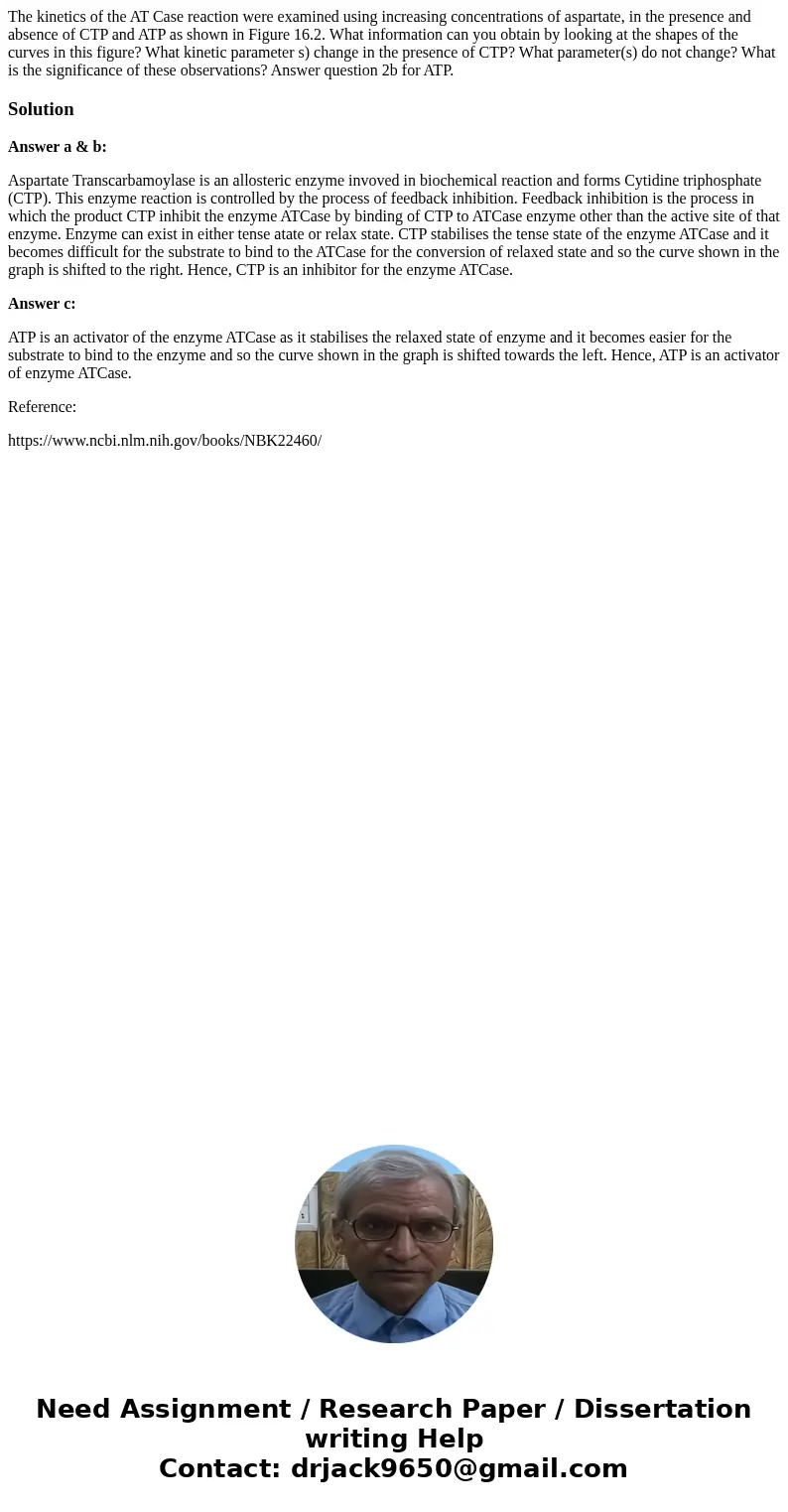The kinetics of the AT Case reaction were examined using inc
Solution
Answer a & b:
Aspartate Transcarbamoylase is an allosteric enzyme invoved in biochemical reaction and forms Cytidine triphosphate (CTP). This enzyme reaction is controlled by the process of feedback inhibition. Feedback inhibition is the process in which the product CTP inhibit the enzyme ATCase by binding of CTP to ATCase enzyme other than the active site of that enzyme. Enzyme can exist in either tense atate or relax state. CTP stabilises the tense state of the enzyme ATCase and it becomes difficult for the substrate to bind to the ATCase for the conversion of relaxed state and so the curve shown in the graph is shifted to the right. Hence, CTP is an inhibitor for the enzyme ATCase.
Answer c:
ATP is an activator of the enzyme ATCase as it stabilises the relaxed state of enzyme and it becomes easier for the substrate to bind to the enzyme and so the curve shown in the graph is shifted towards the left. Hence, ATP is an activator of enzyme ATCase.
Reference:
https://www.ncbi.nlm.nih.gov/books/NBK22460/

 Homework Sourse
Homework Sourse